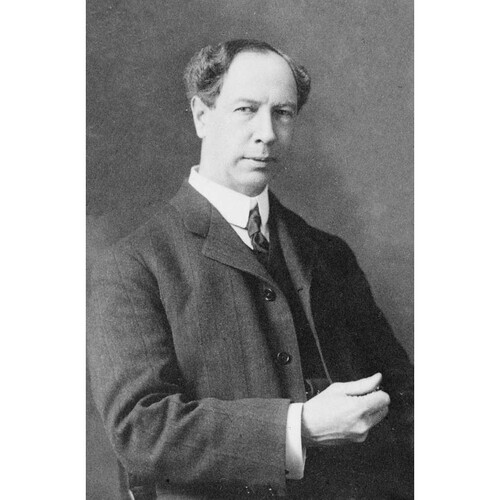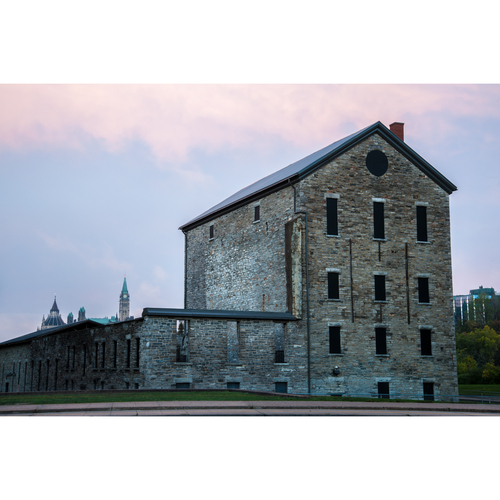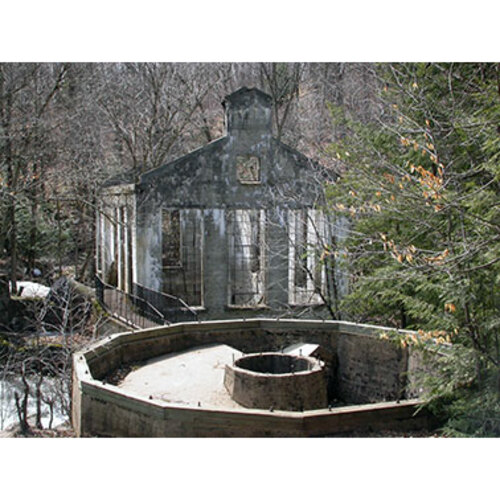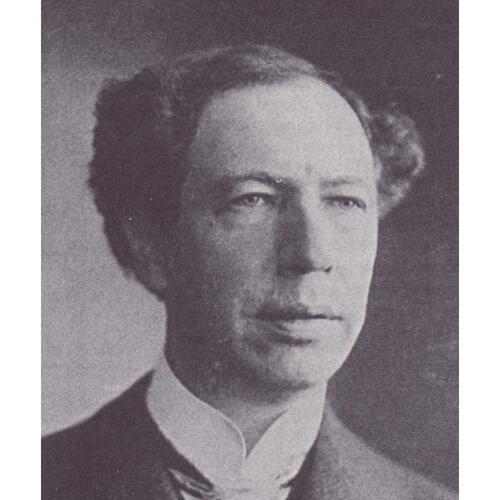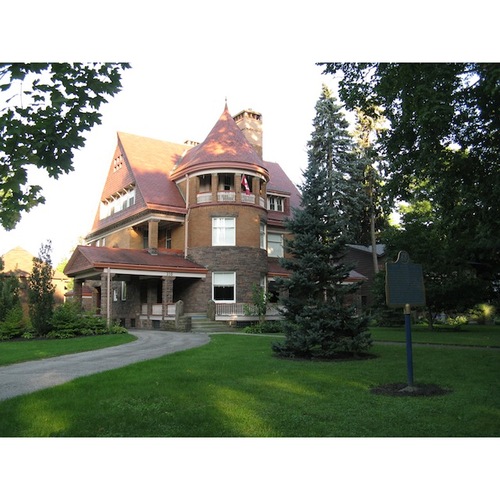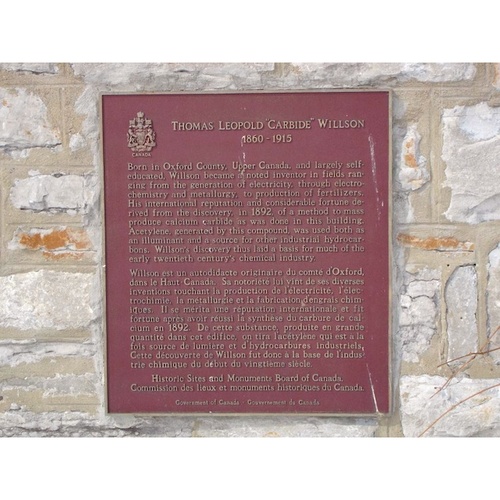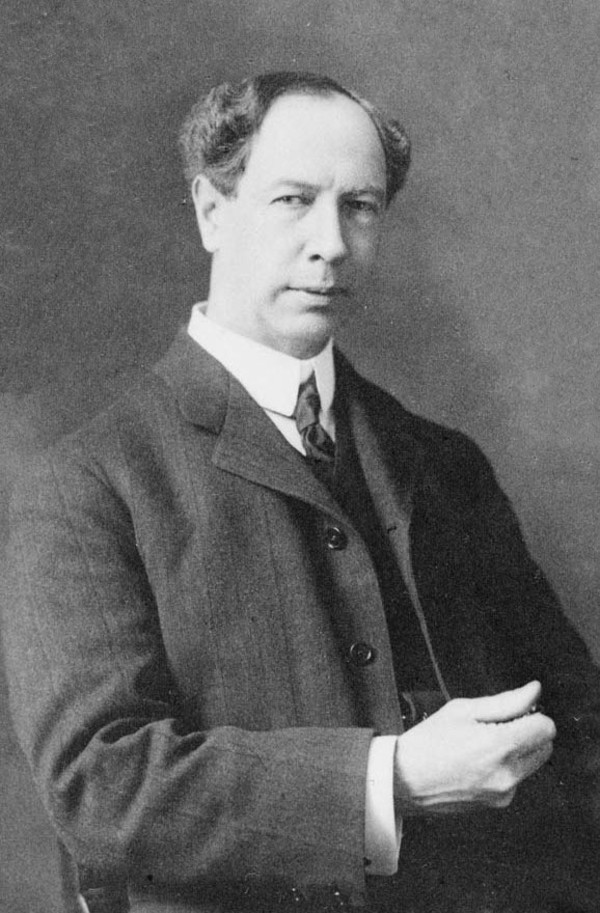
Source: Courtesy of Wikimedia Commons
WILLSON, THOMAS LEOPOLD, inventor, engineer, and businessman; b. 14 March 1860 near Princeton, Upper Canada, son of Thomas Whitehead Willson and Rachel Sabina Bigelow; m. 27 Aug. 1895 Mary Parks in Marysville, Calif., and they had three sons and a daughter; d. 20 Dec. 1915 in New York City and was buried in Ottawa.
Thomas Willson’s father ran a farm near Princeton but a bad investment resulted in its loss and the family’s move to Bridgeport, Conn. After an unsuccessful venture into manufacturing, he returned to Ontario, settling in Hamilton about 1872. Young Thomas showed an early interest in electricity; after attending Hamilton Collegiate Institute, he pursued his own inventions while working for a blacksmith.
Willson’s prototypical dynamo and electric-lighting system failed to find a market in Hamilton. In 1882 he moved to New York City, where he worked as an inspector of electrical installations for various companies and carried on with his own projects. Arrangements with investors to produce his designs never resulted in a marketable product, so in 1890 he formed his own company, Willson Electric. It was unsuccessful, in part because manufacturers were nervous about investing in untried electric technologies.
Looking for applications of his dynamo, Willson had begun experimenting in 1888 with the reduction of metallic oxides in electric furnaces, then too in the early stages of development. In partnership with James Turner Morehead, who had surplus waterpower at his cotton mill in Spray, N.C., he formed the Willson Aluminum Company in 1891 to search for an inexpensive means to produce pure aluminum. One approach apparently tried by Willson was the use of calcium to reduce aluminum chloride in an electric furnace.
On 2 May 1892 Willson was attempting to produce metallic calcium through the electrothermal reduction of lime and carbon, in the form of powdered anthracite. The heavy, mysterious substance accidently formed turned out to be calcium carbide; when immersed in water, it generated a known gas, acetylene, which burned. Though Henri Moissan of France made calcium carbide in a laboratory that same year, Willson’s process produced the exotic compound far more cheaply. Recognizing the significance of his discovery, Willson successfully developed a technology for the commercial production of carbide using common materials and devoted himself to finding marketable applications. Initially acetylene was useful for lighting, where it outshone coal gas and incandescent electric lights (prior to the development of the tungsten filament). Its most important use, oxyacetylene welding and cutting, would be developed in 1903.
A syndicate (later Union Carbide) was formed to underwrite the development of uses of calcium carbide. In 1895 Carbide Willson, as he became known, sold his American patents to this syndicate, married his California sweetheart, and returned to Canada to develop the carbide industry there. The Willson Carbide Works Company of St Catharines, Ont., built its first plant in 1895 at nearby Merritton, where waterpower from the Welland Canal was used to generate the needed electricity. Around the world, demand for carbide outstripped supply, especially as acetylene lighting was installed in streets and buildings. As a result Willson had more plants constructed, at Ottawa and Shawinigan, Que. Although an international syndicate regulated exports, the Canadian industry was always profitable.
After moving to Ottawa in 1901, the man who turned “water into light” continued to involve himself in applications of carbide. He was instrumental in the formation there of the Acetylene Construction Company (1903), which built town-lighting plants in the northwest, and the International Marine Signal Company (1906), which produced a safe, automatic buoy lit with acetylene and employed worldwide. In Ottawa Willson played the social role of a successful industrialist: he was a member of several clubs, the first owner of an automobile in the capital, and host of débutantes, artists, and politicians. In 1907 he purchased a summer property at Lac Meech in the Gatineau hills. He installed excellent laboratories there and at his Metcalfe Street home in Ottawa, and experimented with everything from new applications of carbide to telephones. In 1909 he was awarded the first McCharles Prize by the University of Toronto for his discoveries.
Willson always had a weakness for grand schemes. From calcium carbide and nitrogen gas he produced an inexpensive nitrogenous solid that could be ground up for fertilizer. His dream that this process would revolutionize agriculture had some foundation. Chemists from the Interstate Chemical Corporation and the International Agricultural Corporation agreed that Willson’s patented process would be much cheaper than their own. In 1911, in the hope of building a pulp and paper business, he sold his Canadian carbide patents to Canada Carbide Company in order to purchase hydroelectric sites on the Shipshaw and Saguenay rivers in Quebec, along with huge timber rights.
Vast amounts of capital were required to develop his projects. Unable to find financial partners, in 1912 Willson contracted with Interstate Chemical and James Buchanan Duke, an American tobacco and textile millionaire, to mortgage his fertilizer patents and Quebec properties in order to fund a small fertilizer plant at Lac Meech. Duke agreed to purchase the operation if he was pleased with the results. A year later, even as the plant was producing beyond expectations, Willson ran short of cash, missed an interest payment, and watched Duke seize his assets.
Undaunted, Willson learned that he still held the rights to carbide production in Newfoundland and Labrador. He embarked on plans for dams, railways, and carbide, pulp and paper, and fertilizer factories that would use the considerable hydroelectric resources there. Had he received the financial support of the Newfoundland government and the capital promised by British investors, he might have altered the industrial history of Newfoundland. The outbreak of war with Germany, however, prevented the export of British capital. While in New York in 1915 in a last attempt to raise money, Willson suffered a fatal heart attack.
Willson’s gifts as an inventor made him a fortune and contributed significantly to Canadian science and technology. His confidence in grand schemes and lack of either financial acumen or a solid business partner resulted in the loss of that fortune. A crumbling condensing tower for superphosphates, on his former Lac Meech estate, is a reminder of Willson’s enterprise and inventiveness.
A report by Thomas Leopold Willson and J. J. Suckert on “The carbides and acetylene commercially considered” was published in the Franklin Institute, Journal (Philadelphia), 139 (January–June 1895): 321–41, and reissued in Ont., Bureau of Mines, Report (Toronto), 1895: 152–66. Willson’s papers are preserved in NA, MG 30, A85.
County of Yuba (Marysville, Calif.), Vital records, marriage certificate, 27 Aug. 1895. NA, MG 28, III 26. Ottawa Evening Journal, 21 Dec. 1915. H. G. J. Aitken, American capital and Canadian resources (Cambridge, Mass., 1961). J. J. Brown, Ideas in exile: a history of Canadian invention (Toronto, 1967). D. C. Campbell, Global mission: the story of Alcan (3v., [Montreal], 1990), 1. Canadian men and women of the time (Morgan; 1898 and 1912). Canadian who’s who (1910). J. H. Dales, Hydroelectricity and industrial development: Quebec, 1898–1940 (Cambridge, 1957). D. W. F. Hardie, Acetylene: manufacture and uses (London, 1965). A history of chemistry in Canada, comp. C. J. S. Warrington and R. V. V. Nicholls (Toronto, 1949). M. W. Langford, “Central Canadian industrial electrochemistry to 1914: a case study of entrepreneurship” (ma research essay, Carleton Univ., Ottawa, 1977). V. B. Lewes, “The commercial synthesis of illuminating hydrocarbons,” Soc. of Arts, Journal (London), 43 (1894–95): 156–65. Ont., Bureau of Mines, Report, 1895: 139–66. Georges Pellissier, L’éclairage à l’acétylène: historique, fabrication, appareils, applications, dangers (Paris, 1897; copy in NA, MG 30, A85). Carole Precious, Thomas Carbide Willson (Don Mills [North York], Ont., 1980). Union Carbide Canada Limited, “Carbide”: saga of a Canadian inventor (Toronto, [1976]; copy in AO, Pamphlet Coll., 1976, no.23). U.S., Lighthouse Board, Report on use of acetylene gas by the Canadian government as an illuminant for aids to navigation, by Albert Ross, captain, U.S.N., member of the Light-house Board (Washington, 1907; copy in NA, MG 30, A85). Marion [Willson] Roberts, “Carbide Willson – 1860–1915,” Up the Gatineau! (Old Chelsea, Que.), no.2 (1976): 16–22.
Cite This Article
Jennifer Paton, “WILLSON, THOMAS LEOPOLD,” in Dictionary of Canadian Biography, vol. 14, University of Toronto/Université Laval, 2003–, accessed December 31, 2025, https://www.biographi.ca/en/bio/willson_thomas_leopold_14E.html.
The citation above shows the format for footnotes and endnotes according to the Chicago manual of style (16th edition). Information to be used in other citation formats:
| Permalink: | https://www.biographi.ca/en/bio/willson_thomas_leopold_14E.html |
| Author of Article: | Jennifer Paton |
| Title of Article: | WILLSON, THOMAS LEOPOLD |
| Publication Name: | Dictionary of Canadian Biography, vol. 14 |
| Publisher: | University of Toronto/Université Laval |
| Year of publication: | 1998 |
| Year of revision: | 1998 |
| Access Date: | December 31, 2025 |


